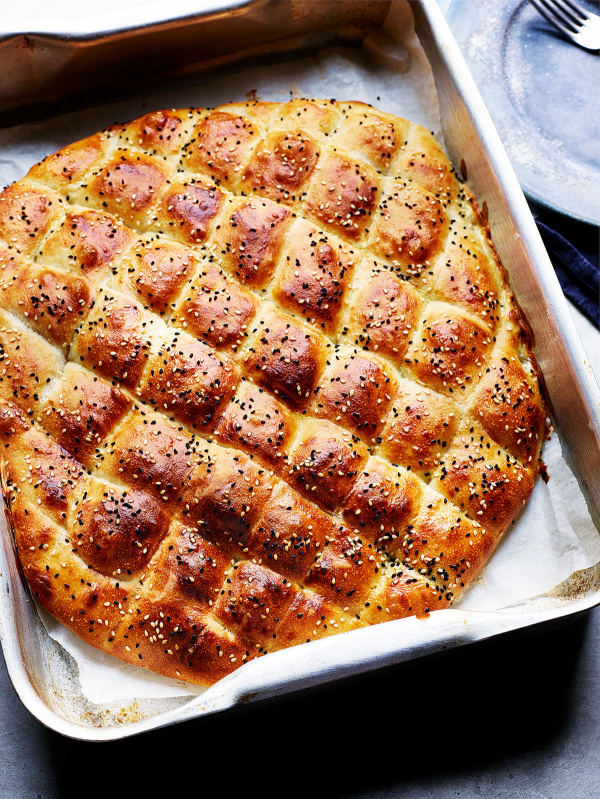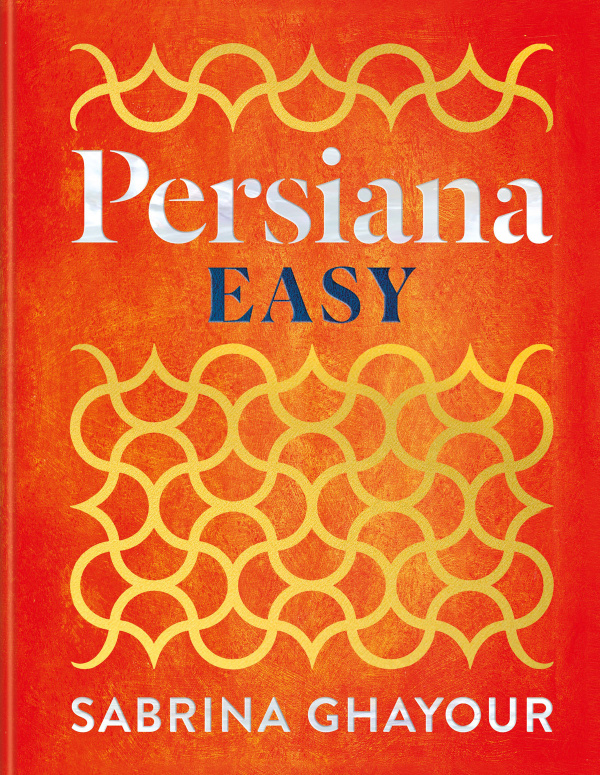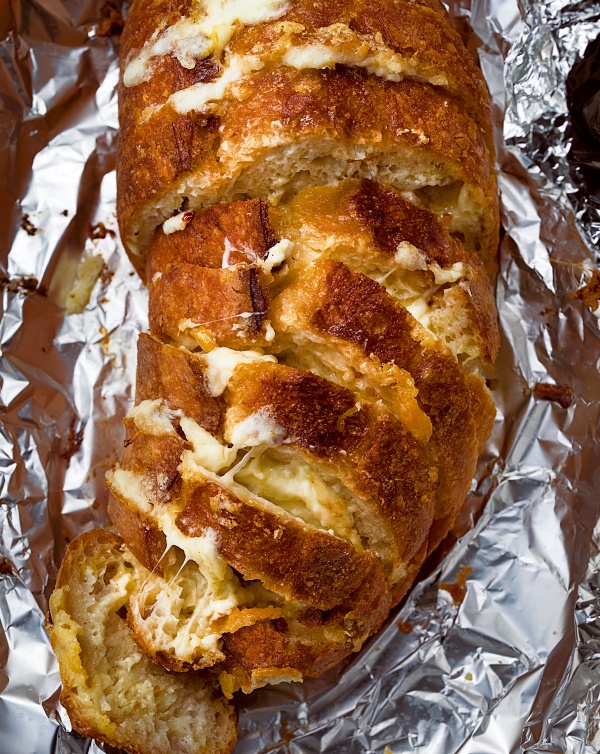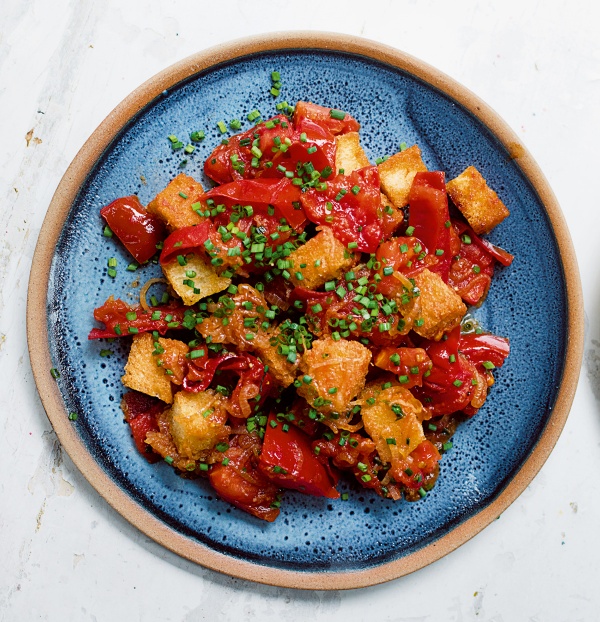Turkish Pide Bread
by Sabrina Ghayour, featured in Persiana Easy Published by Mitchell BeazleyIntroduction
The correct name for this type of bread is ramazan pidesi – breads that are traditionally made and served during Ramadan – but for ease, I call them pide at home. It really is very easy to make and is a stunning accompaniment to soups and stews, but if like me the Westerner in you prevails, pide also makes a magnificent sandwich (I like mortadella, pickled cucumbers, tomatoes and mayonnaise). Alternatively, serve whole at the table and slice or pull apart.
The correct name for this type of bread is ramazan pidesi – breads that are traditionally made and served during Ramadan – but for ease, I call them pide at home. It really is very easy to make and is a stunning accompaniment to soups and stews, but if like me the Westerner in you prevails, pide also makes a magnificent sandwich (I like mortadella, pickled cucumbers, tomatoes and mayonnaise). Alternatively, serve whole at the table and slice or pull apart.

Share or save this
Ingredients
Makes: 1 large bread
- 500 grams strong white flour (plus extra if needed)
- generous amount of Maldon sea salt flakes (crushed)
- 1 heaped teaspoon caster sugar
- 7 grams sachet fast-action dried yeast
- 300 millilitres lukewarm water
- olive oil
- 2 tablespoons thick Greek yoghurt (plus 1 tablespoon for the glaze)
FOR THE GLAZE & TOPPING
- 1 egg yolk
- 1 heaped teaspoon sesame seeds
- ½ teaspoon nigella seeds
- 1lb 2 ounces strong white flour (plus extra if needed)
- generous amount of soft sea salt flakes (crushed)
- 1 heaped teaspoon granulated sugar
- ¼ ounce sachet fast-action dried yeast
- 10 fluid ounces lukewarm water
- olive oil
- 2 tablespoons thick Greek yoghurt (plus 1 tablespoon for the glaze)
FOR THE GLAZE & TOPPING
- 1 egg yolk
- 1 heaped teaspoon sesame seeds
- ½ teaspoon nigella seeds
Method
Turkish Pide Bread is a guest recipe by Sabrina Ghayour so we are not able to answer questions regarding this recipe
- Mix the flour, salt and sugar together with a fork in a large mixing bowl.
- Put the yeast into a small cup, pour in 50ml (2fl oz) of the lukewarm water and mix well using the fork, then leave to sit for 5 minutes. Make a well in the flour mixture and pour in the yeast mixture – swill out any yeast with the remaining lukewarm water and add it – along with a good drizzle of olive oil and the yogurt.
- Mix everything together with the fork, then use your hands to bring it together into a ball.
- Knead the dough in the bowl for 1 minute, adding more flour if needed, then cover the bowl with a clean tea towel and leave to rest for 10 minutes. Repeat the kneading and resting process twice more.
- Line your largest deep baking tray with baking paper. Place the dough in it and stretch and flatten it into a large circle 28–30cm (11–12 inches) in diameter, then cover with the clean tea towel and leave to rest somewhere warm for 1 hour.
- Ten minutes before the resting time is up, preheat the oven to 220°C, 200°C fan (425°F), Gas Mark 7. Take a small side plate, turn it on its side and use the edge of the plate to make indentations in the dough in a criss-cross pattern (don’t use a knife as you don’t want to cut through the dough).
- Beat the egg yolk with the remaining tablespoon of yogurt, then brush the mixture over the dough. Sprinkle with the sesame and nigella seeds, then bake for 22 minutes until browned. Leave to cool a little before serving.
- Mix the flour, salt and sugar together with a fork in a large mixing bowl.
- Put the yeast into a small cup, pour in 50ml (2fl oz) of the lukewarm water and mix well using the fork, then leave to sit for 5 minutes. Make a well in the flour mixture and pour in the yeast mixture – swill out any yeast with the remaining lukewarm water and add it – along with a good drizzle of olive oil and the yogurt.
- Mix everything together with the fork, then use your hands to bring it together into a ball.
- Knead the dough in the bowl for 1 minute, adding more flour if needed, then cover the bowl with a clean tea towel and leave to rest for 10 minutes. Repeat the kneading and resting process twice more.
- Line your largest deep baking tray with baking paper. Place the dough in it and stretch and flatten it into a large circle 28–30cm (11–12 inches) in diameter, then cover with the clean tea towel and leave to rest somewhere warm for 1 hour.
- Ten minutes before the resting time is up, preheat the oven to 220°C, 200°C fan (425°F), Gas Mark 7. Take a small side plate, turn it on its side and use the edge of the plate to make indentations in the dough in a criss-cross pattern (don’t use a knife as you don’t want to cut through the dough).
- Beat the egg yolk with the remaining tablespoon of yogurt, then brush the mixture over the dough. Sprinkle with the sesame and nigella seeds, then bake for 22 minutes until browned. Leave to cool a little before serving.






Tell us what you think
Thank you {% member.data['first-name'] %}.
Explore more recipesYour comment has been submitted.